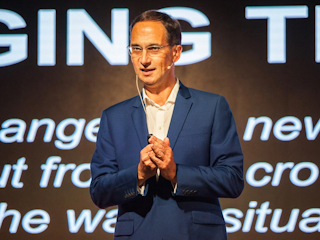And it’s not just the smaller retailers that are getting their heads around that—many global brands have stopped selling through Amazon, too. They want to build their own relationships and own their customer info. They want to know who is buying what, where, and how, and they don’t want another company to be able to capitalize on their market information.
Then there are direct-to-consumer (DTC) brands. The concept is smart and simple—take manufacturing in-house and avoid the high cost of brick-and-mortar and shelf-space by selling online.
What’s more, digitally native brands can pick and choose what and where to serve based on data about high volumes or peak times— everything else can be left by the wayside.
In their virgin states, DTC brands have the freedom to pivot purely around the customer’s needs. The nature of their businesses allows them to innovate without the grips of the red tape of decades-old governance models. They act quickly and they meet the immediate need of a captive audience.
So, how can traditional retailers compete?
This is where it comes down to the customers. All of the customers. As a large, established business with multiple products, the best thing you can do is focus on owning the transaction, owning the relationship, and owning those insights.
Yes, these disruptors are offering a great service in the markets that they operate within, but there is absolutely no reason why you can’t achieve the same and capitalize on the strength of the heritage and brand you’ve been building over the last decade or more.
Innovate from within
If it makes more sense for you to set up a separate arm of your business that focuses entirely on a test and learn experimental approach to new product launches or marketing campaigns, without risking the rest of the brand, then do it. You need to build in a culture that supports speed and responsiveness instead of long, drawn-out marketing campaigns or product launches. Agility is absolutely essential.
Think about services, not only products
Start thinking about services that compliment your products. It’s the same reason why I have an Apple Watch, iPhone, MacBook, etc. Apple creates great products, but they also offer a combined service and connections that make my life easier and better. I’m not just buying them for the products, I’m buying the full service, and that makes me a committed and loyal customer, going elsewhere would be too complicated now. I’m invested in the brand.
Deliver stunning customer services that can scale
Netflix is an amazing company (and we all know what happened to Blockbuster because they weren’t quick enough to innovate), but they weren’t quite prepared for the influx of customers that a “working from home” population would bring them. The same with Microsoft Teams—both are excellent products that have seen issues associated with an influx of customers.
 Think about the power of a chatbot here—something we’ve seen a massive increase in requests for. Installing a chatbot is something that you can do here and now with relative ease. It will filter out the lion’s share of customer requests and queries and will make sure you’re still offering consistent service. Remember that chatbots aren’t what they once were, they’ve come a really long way in the last 12 months and are well worth considering. Customer service needs to be great all of the time, not just when something goes wrong.
Think about the power of a chatbot here—something we’ve seen a massive increase in requests for. Installing a chatbot is something that you can do here and now with relative ease. It will filter out the lion’s share of customer requests and queries and will make sure you’re still offering consistent service. Remember that chatbots aren’t what they once were, they’ve come a really long way in the last 12 months and are well worth considering. Customer service needs to be great all of the time, not just when something goes wrong.
Change your mindset
No one likes the tax man but when the Dutch tax authority introduced a new slogan, “We can’t make paying taxes pleasant, but at least we can make it simple,” they created a mindset shift. By humanizing themselves, they found that everything improved, and customers responded much more positively. They are making iterative improvements to the tax processes, and they have become a fully connected service, they are even connected to customers’ banks. This makes the experience so much easier for their customers, shifts the way they think about the tax authority and how customers respond to them as a brand, and makes a stressful process a lot more manageable. Offer your customers something different and see how they respond.
The bottom line
Yes, these disruptors have had massive success. That comes down to an intricate understanding of their audience and clever use of the data to deliver incredible and relevant experiences. They have the ability to pivot quickly and to meet the immediate needs of their customers, and they offer connected services and subscription models that make life easier and more intuitive. But they aren’t the be-all and end-all. They have their own issues to deal with when it comes to scalability and product lines.
For the original major players, there are steps you can take today to make sure you’re well-positioned to maintain your place as a market leader, no matter the competition.







